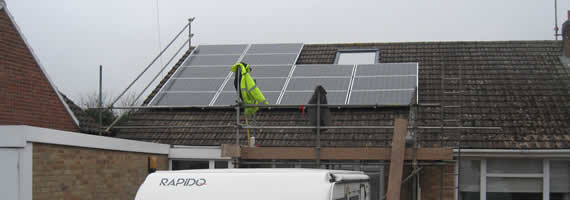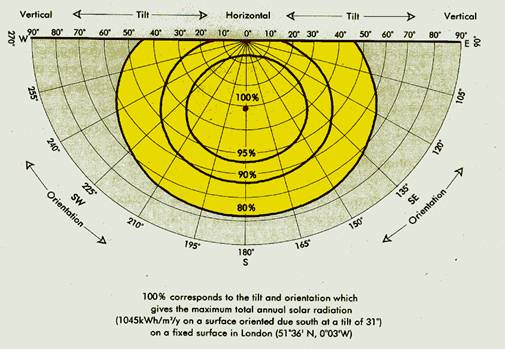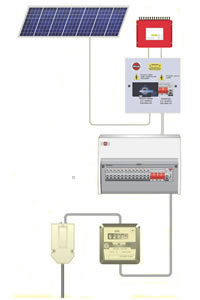





2.96Kwp Schuco Array using SMA 3000HF inverter, Kenilworth, Warwick
Typical PV Output
For a well designed 1Kwp grid connected PV system installed in the UK one can expect 750Kwh of electrical energy per year. This 1Kwp PV array will require 8-15 m² of exposed area, depending on PV cell type and use a DC-AC inverter of 800w. The array should be installed to point South and angled at 30° degree to the horizontal for optimum performance. The graph below shows the impact of non optimal alignments and tilts, however we recommend an orientation between SW and SE in order to be certain of achieving a satisfactory yield.

A typical 3 bedroom house uses 3290Kwh/yr of electricity, therefore a typical domestic sized PV system of between 1.5 and 2 Kwp could provide between 30-40% of the electrical requirements. This proportion would be greater in an energy efficient home of the same size, although demand may occur at a different time from generation. Installation on commercial buildings is also particularly suited to PV, as demand for electricity occurs at the same time as generation.
Shading
The shading of modules should be avoided altogether. Ideally no shade should be cast between 09.00 and 15.00 hours on the day of the winter solstice (21st December).
When a solar cell is shaded, it can no longer produce current. It then behaves like a blocking diode and current cannot flow in the other cells in the series either. This reduces the output of the modules which reduces the output of the string which reduces the output of the whole array.
Grid tied Inverters

image courtesy of Wylex
In a typical grid tied solar electric system, the DC electric produced by the array is usually fed by cable to the inverter. The inverter converts this DC electric to AC which is fed into the house consumer unit through a spare way. This generated electricity is then available for use by the building loads or fed back into the grid.
The inverter is set up to maximise the output of the PV array, it dose this by tracking the point of the I-V curve of the array at which electrical power output is maximised, this is known as maximum power point tracking (MPPT).
The inverter is also set up to adhere to G83/1 requirements which sets strict performance limits on voltage and frequency of the grid, automatic disconnection is required if the grid is de-energised or the limits not met.
